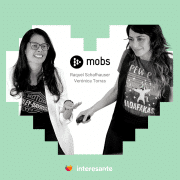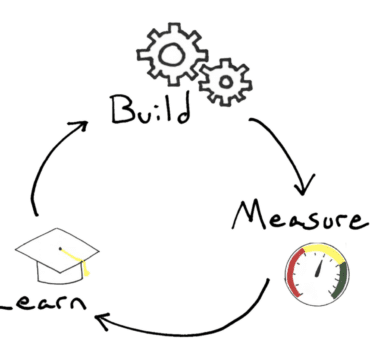Editor-in-Chief @ Interesante
The design is how it works — Steve Jobs. Competitors copy your design but the true value of a digital transformation rests on the microservices, APIs, and data models created underneath.
Lessons from a Digital Transformation across 20+ locations, 500 employees, and millions of dollars in revenue. Read on to find out how we beat their competitors with technology. We worked closely with management to make Digital part of their core processes.
Digital Transformation:
24 months is what it took for this century-old company to see the results of the Digital Transformation on their bottom line.
Our client received innovation awards from national industry organizations, and their traffic and leads went up exponentially. Most importantly, they secured two of the biggest corporate clients within a decade.
The Discovery Phase
We visited the headquarters of this well-established company in a beautiful small American town. The kind of place where kids jump in the lake on a late Friday afternoon after a long day of biking and running around.
“When you innovate, you’ve got to be prepared for people telling you that you are nuts.” –Larry Ellison
The grown-ups walk up and down the neighborhood sidewalk, usually barefoot and with a glass of wine in their hands, admiring the sunset and sharing stories. The sunsets rarely disappoint as the sun layers a bright orange blanket over the sparkling lake while the children swing from makeshift swings that hang from trees.

Learning The Business
Being the optimists we are and with a new-founder type of stamina, we dove in with a smile and an eagerness to code this company into a digital existence.
«Looking back I see how we were seen as those crazy Californians bringing Digital to a century-old company in the heart of the Midwest. You have to be a little crazy to do this and succeed.»
It was 2005 and most companies already had websites. This company, in particular, had been one of the first to purchase a domain in the 90s and as of 2005, they had nothing but a logo posted to the site. As you can imagine, I was ecstatic and wanted to get to work right away.
The goal was to help this company realize its potential by bringing its brick-and-mortar operations online. This was an opportunity too big to pass up.
We had an inkling of how the Internet was going to change their business as they knew it. It was 2005, and people were starting to recuperate from the dot-com bust. Facebook, Twitter, Uber, AirBnB did not exist yet. We truly were those crazy Californians bringing the goldrush with us.
Creating A Digital Architecture

Their website was very simple which brought, an opportunity to implement a pioneering digital strategy for the recycling industry.
Building Frameworks
We developed a strategic plan with the CEO. He knew digital was the right direction to take but he needed a digital blueprint to follow.
Our team also developed the digital brand and optimized the site for search engines. We built a prototype on a nascent system called WordPress.
The technology was ready, the branding was done, and the C-Suite was on board. The first step was to relaunch their first version of their website.
Building A Digital Brand
“The digitalization of marketing is only the beginning of a massive shift toward fully digitized retail operations.” Antonio Altamirano, Forbes
Brand messaging is no longer fully owned by the brand.
It’s up to the user to identify with it and to interpret the brand’s promise. In order to tackle this challenge, we developed a content strategy. Over the course of a couple of years, we implemented the content strategy with great success and as the conversion rate grew, the need for a culture change became more and more apparent.
Traffic arrived and brought to light the fact that they needed a call center to support the dozens of calls that were coming from all over the country.
This was exciting and it felt as if we tapped into a gold mine. We help build a call center to answer the phone calls that were pouring in. The call center eventually became a pillar of its marketing and communication strategy.

Increasing Your Digital Advantage
In conjunction with the newly hired technology leader, we developed a scalable strategy, supported with technology in conjunction with marketing automation and sound leadership.
We built an efficient REST infrastructure on top of an outdated database –the abstract data layer powered a host of next-gen web and mobile apps that connected more than 500 employees across dozens of locations and tracked dozens of trucks. CRM, APIs, Automation, SEO, Content Marketing, Geolocation, Mobile Native.

It was a fabulous time. No other company within that industry was doing it. These were the early days for B2B companies and Digital Transformation was not even on the radar of consulting companies let alone enterprises with a brick-and-mortar presence.
Bootstrap by Twitter had just been released. We used it to accelerate our time-to-market. Python was a huge help as well since it started to be adopted by high-growth tech startups.
Instead of CRM licenses or Google for Business, which was met with distrust due to data ownership concerns, we developed a prototype for an internal CRM tool to give them full control of their data. Eventually, this super light CRM became the system of record for the sales team. Within a few weeks, we had an MVP and we started testing and training employees.
The roadblock was culture but the results were much better than expected and it increased the volume of calls from just a few per week to hundreds per day.
Making Sense Of A New Paradigm
Technology as a core component of a business strategy is a fairly new paradigm for all companies, especially for the ones that did not grow up in the digital age. The effort was multidisciplinary, educational but mostly a cultural one.
The main reason the effort succeeded was a strong technology leader with the vision to know where to go and humble enough to know who to hire to get there.

Over the last 20 years, a number of industries have experienced severe disruption due to the rise of digital technology. Profit margins have shrunk in the traditional economy, as customers have adopted new ways of procuring goods and services.
In retail, for example, Amazon has re-invented the experience of shopping in actual stores to one of buying a world of products online. When it comes to airplane tickets, we have become our own travel agents, booking reservations through Expedia or Kayak or the airlines’ own websites.
Rather than shop around for a hotel, travelers find lodging at private homes offered on Airbnb. Instead of hailing cabs, riders submit trip requests to the Uber app. Unlike the fleet cab system, Uber drivers use their own personal cars. These various examples dramatically illustrate how digital technology has rendered the old models obsolete. With the number of new startups increasing exponentially, the disruptive economy appears to be unstoppable!
Though it has taken some time, we now see that the scrap recycling industry is ripe for disruption. This does not mean, however, that long-established companies face extinction in the face of digital disruption. It does mean that the pace of innovation and digital execution must accelerate.
Perhaps one of the most intriguing aspects of this situation is that upstarts—industry counterparts to Amazon, Expedia, Airbnb, or Uber— need industry experts to execute their new technologies. In contrast, long-established companies need disrupters to survive and solidify their market positions.
Maintain Your Competitive Advantage
«In skating over thin ice, our safety is in our speed.»
Ralph Waldo Emerson
New leadership had taken over at a slow but deliberate pace which allowed us to speed up and achieve greater technological feats. Though constrained by budgets, the new technical lead was able to provide coverage and allowed us to truly spread our wings. He went on to become a C-level executive at a fast-growing technology company.

The website was updated to handle heavy traffic and loading speeds were hovering under 500 milliseconds. We updated certain services to handle recency, context, and relevance in order to achieve a great level of visibility. We continue to own top positions on Google for over four thousand high-value keywords.














